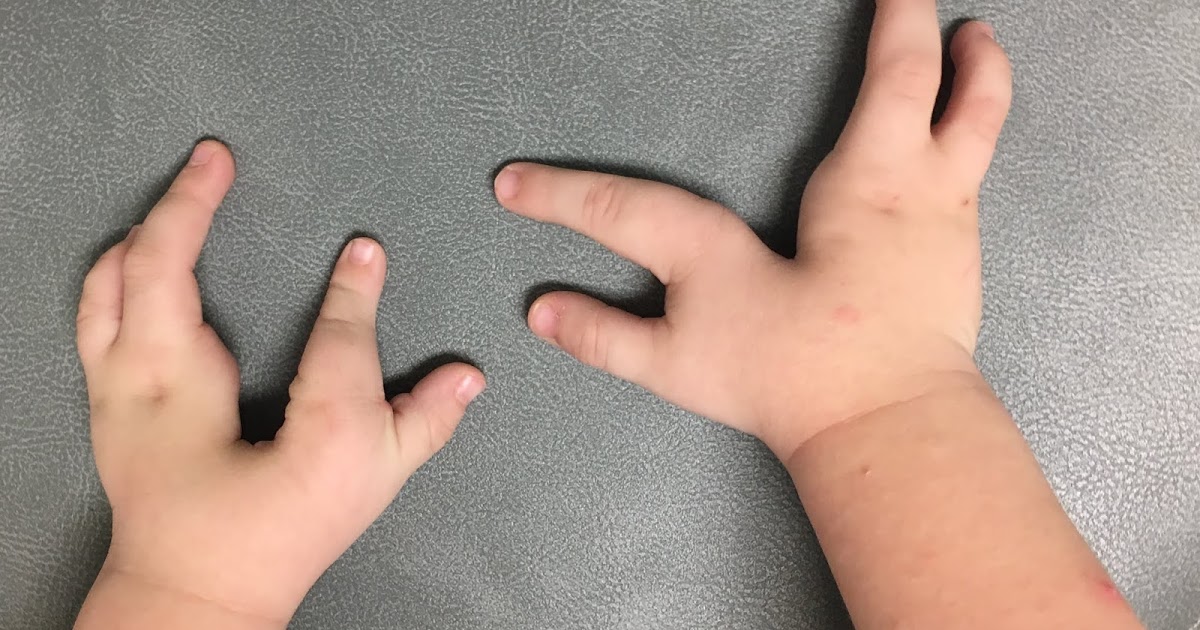Key Warning Signs Of EEC Syndrome
Ectrodactyly-ectodermal dysplasia-clefting syndrome (EEC syndrome) is a type of ectodermal dysplasia or a group of disorders that affect the ectoderm or outer embryonic tissue that helps form the sweat glands, teeth, skin, hair, and nails. Depending on the underlying cause, EEC syndrome can be classified into one of two different types. EEC syndrome type 3 is the most common variation of this disorder, and it is a result of mutations in the TP63 gene. EEC syndrome type 1 is a very rare type of EEC and is the result of a mutation in the q arm or long arm region of chromosome seven. EEC syndrome is inherited in an autosomal dominant fashion. It can be diagnosed by a physical exam and genetic testing. If the mutation in chromosome seven or the TP63 gene is known and runs in the family, diagnosis may be made through genetic testing before the birth of the child.
Uncover the key warning signs of EEC syndrome now.
Missing Or Irregular Fingers Or Toes
A characteristic warning sign of EEC syndrome is ectrodactyly, which is where the affected individual has missing fingers or toes. All of the fingers and toes may be completely missing, or the individual may be missing just some of them. Most often, ectrodactyly affects the middle digits or the middle fingers and toes. Some individuals may exhibit some form of ectrodactyly in all four of their hands and feet. Syndactyly is when an individual's toes or fingers are fused or webbed together. Some individuals only experience this as a result of EEC syndrome. These defects in the fingers and toes occur in individuals affected by EEC syndrome because of a disruption in the initial development of these tissues. This disruption is a result of a mutation in the TP63 gene, which is responsible for the encoding of a protein crucial for limb and limb substructure development. The coding can be jumbled, have a part missing, or have abnormal sections. These TP63 gene mutations cause the wrong protein or the incorrect variation of the proper protein to be produced. The result is irregularity or absence of the fingers or toes.
Discover more symptoms of EEC syndrome now.
Cleft Palate Or Lip

A cleft palate or lip is a distinctive facial malformation that occurs in EEC syndrome patients. The affected individual may exhibit a cleft lip with or without the presence of a cleft palate. These malformations occur while the individual is in the early stages of development in utero. The clefting of the palate or lip happens when there is not enough tissue in the mouth or lips. This absence causes the present tissues not to join together correctly. A cleft lip is a physical separation or split of the upper lip's two sides that appears as a narrow gap or opening in the skin. The separation may continue beyond the nasal base and include the upper gum and upper jaw bones. A cleft palate is an opening or split in the roof region of an individual's mouth. The front boney section of the roof of the oral cavity may be affected along with or without the soft back part of the roof of the mouth. Both malformations can happen on only one or both sides of the individual's mouth. EEC syndrome patients will not always have both a cleft lip and cleft palate because the palate and lip develop separately.
Continue reading to reveal more key indicators of EEC syndrome now.
